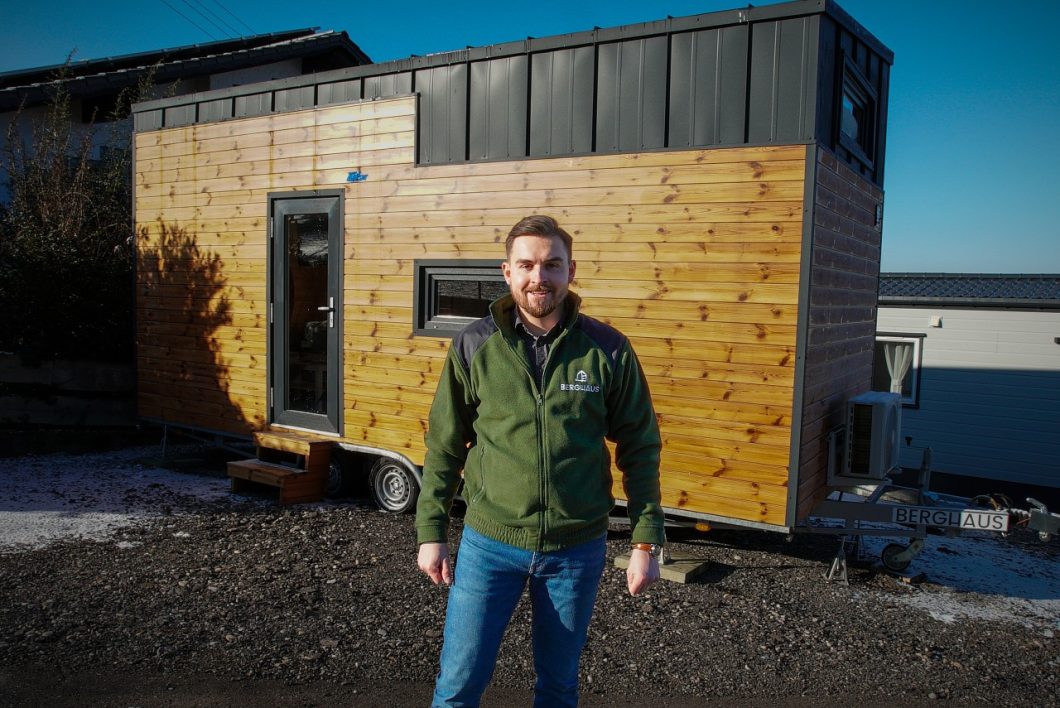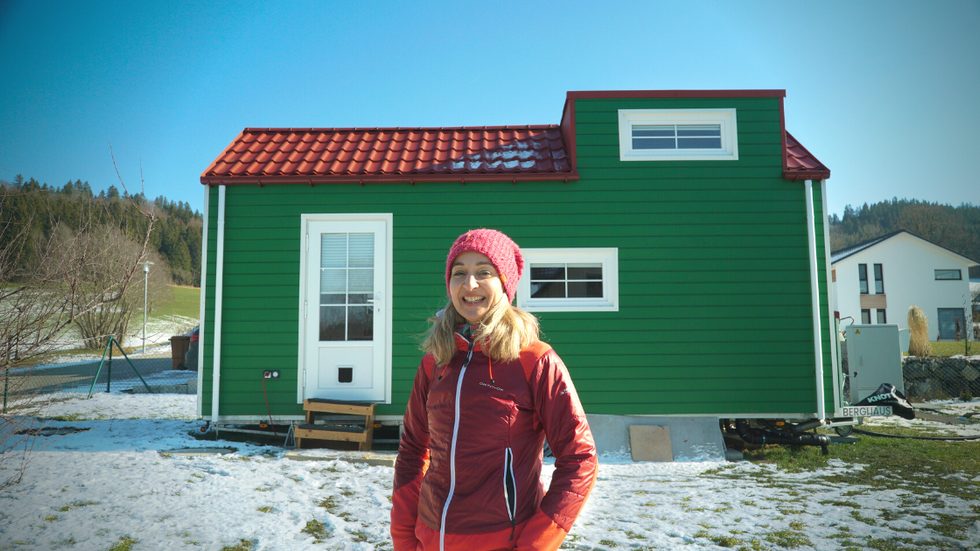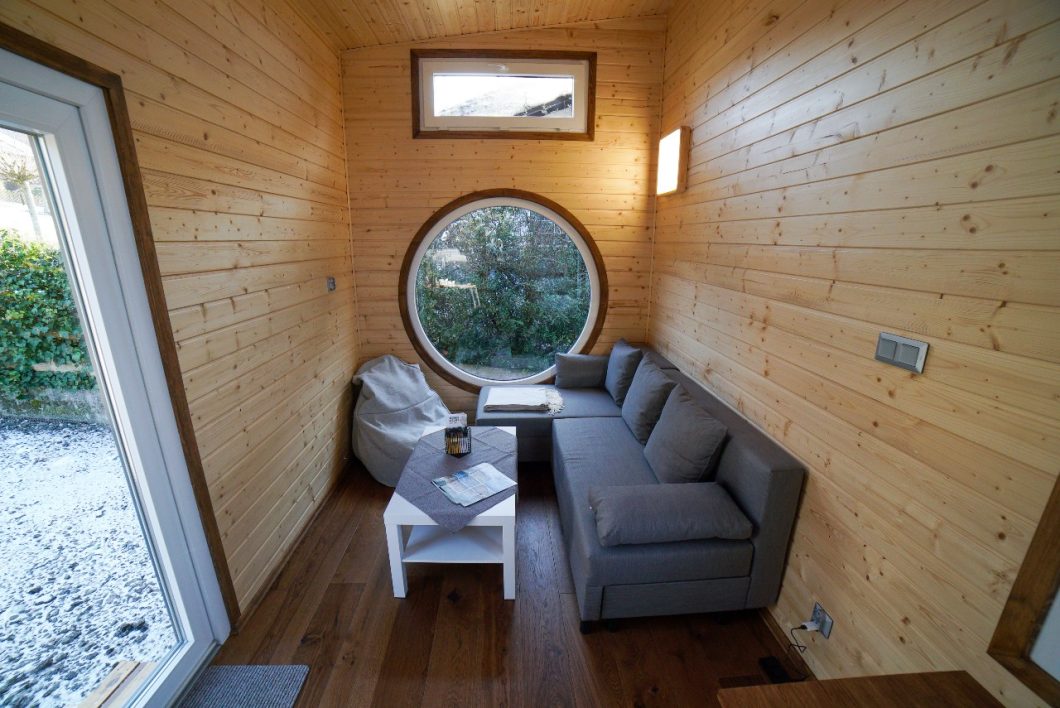Berghaus Tiny House founder Dennis builds tiny homes in Europe. It all started when he lived in one three years ago. He moved from the big city into the Polish countryside for a summer. During that time, Dennis realized he didn’t need that much space to be happy. He fell in love with small spaces, and the rest is history.
“To be in this movement, to work in this, it’s the best feeling. I’m super happy every time when we deliver a tiny house. When we know a client, it’s just awesome because you can really feel that we make something big. It’s always for one person or for a family, we deliver a house and they live in it. It’s an awesome feeling and I wouldn’t like to do anything else. I cannot imagine doing anything else.”
Now Berghaus builds tiny houses on wheels and more spacious modular homes in Krakow, Poland. While their primary market is Germany, they sell and deliver across all of Europe. But there have been many difficulties navigating complications due to the Ukrainian-Russian war. The disrupted supply chain caused significant delays and material prices to skyrocket in a very short period. Additionally, last year they had to recalculate their budget and home prices to counter 20% inflation.
Fortunately, Berghaus has still found a way to deliver high-quality builds at relatively affordable prices. They use extremely efficient insulation, for instance. Impressively, their tiny homes can meet European Union building regulations. The cost of a total-equipped tiny house starts at 55,000 Euros for the smallest model. Most of their homes sell for €80,000 to €100,000.
Watch the tour to learn more about the materials used!
Over the last couple of years, Berghaus has done significant research about legal obstacles for tiny homes in Europe. Dennis explains that land use rules and building permits vary greatly from country to country. For example, in Germany, each of the 16 states has different regulations. Then inside each, it also differs from district to district.
One client didn’t have to get a building permit. She placed her tiny house easily on traditional homeowner’s property. A little while later, her friend bought a tiny home to place just 20 kilometers away. But when she went to the local authorities to find out the requirements, they said her tiny house on wheels wasn’t allowed.
“My advice to all the clients that talk to us, please go to the authorities where you live and explain, what are your plans? What do you want to do? Describe it. Be very friendly. That always helps if you are friendly because these are also people that make their job and they have to check if everything is all right.
And then usually, if you’re asking, what do I need to do so that I can put it on my property? Then usually, you get a positive answer that you know what to do. And then our architects can help them by getting the building permit.”
For tiny home living in Europe, Dennis recommends deciding if you want wheels or not after finding out what’s allowed where you want to live. This is especially true if you don’t want to relocate frequently. Because if local officials require a building permit, you probably should choose a modular tiny home. You can still relocate reasonably inexpensively with a transport company.




